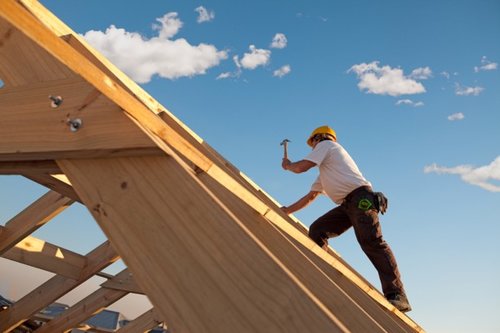There are 297 municipalities and political jurisdictions in the Chicagoland area, and moving between those municipalities – and juggling all of the disparate zoning regulations, building codes and neighborhood amenities – can be quite challenging for builders. So to get a better idea of the main concerns builders have when assessing where to construct their next developments, we spoke with Suzy Kogen Friedman, co-founder of KZF Development, and Brian Brunhofer, the president of Meritus Homes.
1. Communication with Villages – Both Brunhofer and Friedman spoke to the importance of open communication with villages, at all levels of the construction process. From architects, to engineers, to community development officials, to building inspectors, good communication amongst all village staff and builder personnel is paramount. “We definitely want to meet with all key stakeholders up front and understand their processes and how they like to run their department,” Brunhofer says. “That allows us to truly understand their way of business and work within those parameters to make the process and communication efficient.”
2. The Zoning Process – No municipalities share the same zoning regulations, and Friedman admits it can be both tedious and lengthy working through a certain area’s nuances. The key, she explains, is understanding that villages wear two hats. With one, they are meticulous on what their zoning ordinances allow, while with other they must listen to what their residents want and, more importantly, what they do not want. “It’s a hard place for them to be,” Friedman says. “They have to allow development, so builders will continue to want to provide housing and commercial development in their towns; but they are still very sensitive to what their residents have to say.”
3. Meet the Neighbors – Of all the things Friedman encounters when planning a development – whether it be a large-scale project or a tear-down – the most difficult is neighborhood opposition. “People are very well organized, and they know their village respects and listens to what they have to say,” Friedman says. “Homeowners can stop our zoning process in its tracks, and even end it.”
4. The Development Trifecta – For Brunhofer, the big three considerations for future development are the town’s schools, accessibility to transportation and opportunity for future commercial/retail development. “By understanding a municipality’s comprehensive plan, and keeping updated through village staff and local news on what’s happening in the area, we can ‘stay local’ and be opportunistic in terms of development opportunities,” he says.
5. The Lack of Available Land – Premium land sites are in short supply in the Chicagoland area, and that is one reason that tear downs have become so prevalent in older communities. Though it is possible to plan developments along contiguous parcels, Friedman says the process is hardly simple. “There are pockets that we try to assemble for development, but it’s difficult and time consuming, and often involves multiple owners,” she says. “From the time we try to connect several parcels to the time it actually goes to the village for their ‘initial’ comments could be years. Land is the only commodity you can’t reproduce – hence, its premium price tag.”
